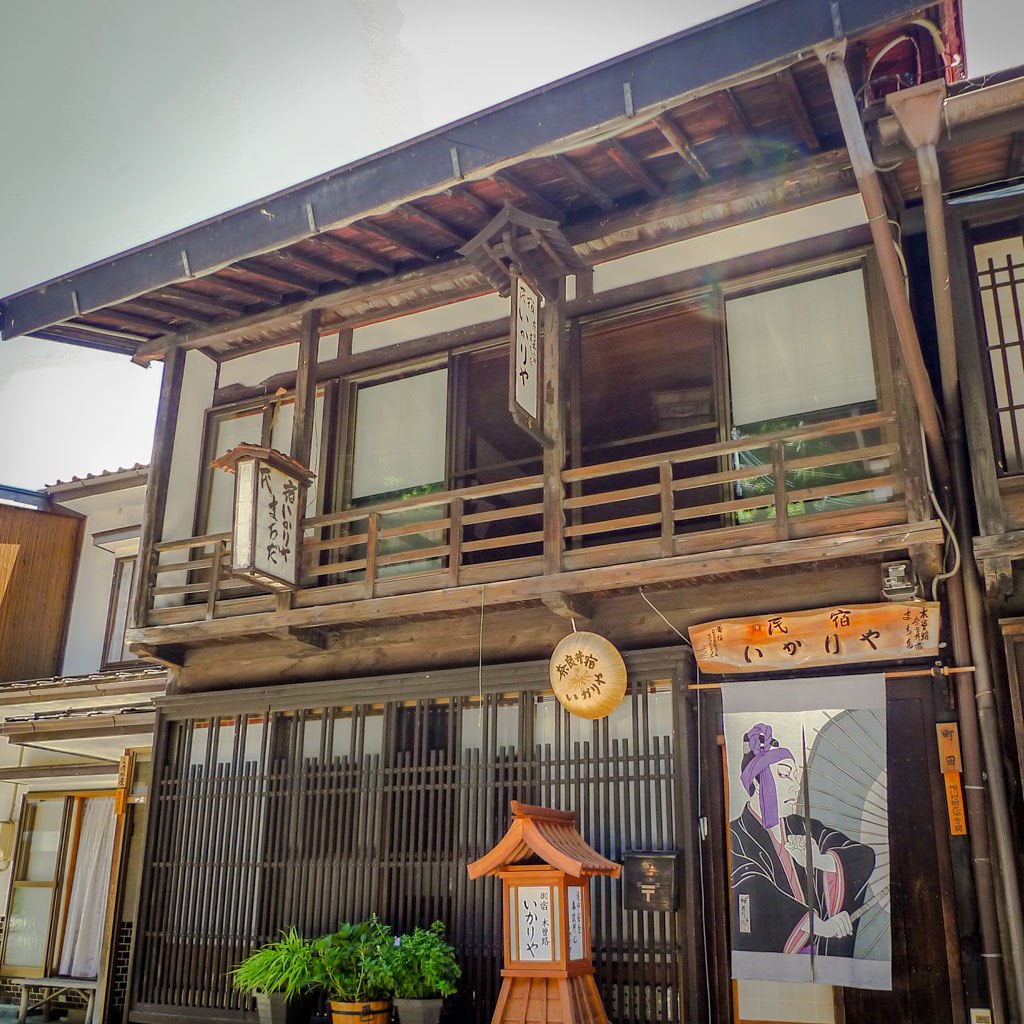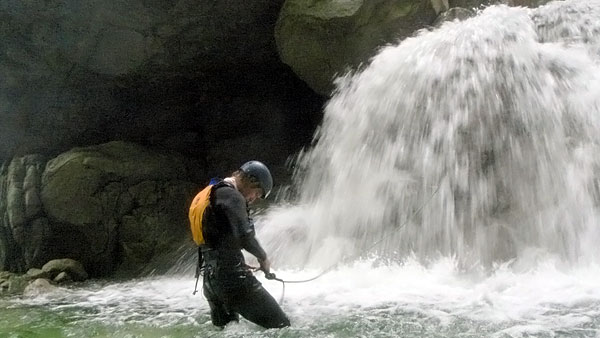Narai-juku Travel Guide: Traditional Japan on the Kisoji/Nakasendo
Share

In the mountains of central Japan, remains of an ancient trade route can be found. Many small towns have been preserved in their Edo-period style and are now national Japanese treasures.

Narai-juku’s main street
In this article:
These old “post towns” take you back hundreds of years to 17th century Japan.
Nakasen-do 「中山道」 is the name of an old and famous Japanese trade-route that was used during the Edo period (1603 - 1867). The Nakasendo ran from Kyoto to Edo (old Tokyo) and in the mountains of Nagano, this part of the route is known as Kisoji 「木曽路」.
Narai-juku 「奈良井宿」, located at Narai, Shiojiri-city, Nagano Prefecture 「長野県塩尻市奈良井」 is almost exactly halfway between Kyoto and Tokyo. In the Kisoji area, there are 11 post towns which form part of the Nakasendo, all of which offer a journey back through Japanese history, accessible by train from many large cities including Tokyo, Nagoya and Nagano.

The government’s seal of approval… this place is a national treasure.
I’ve visited two of these towns, one is Narai-juku (perhaps the most famous of the 11) and the other is Tsumago-juku (the first post town in Japan to preserve its historic streets). The typical traveller to Japan will experience the big cities, and see a few temples in Kyoto. If you want a unique experience in Japan, immerse yourself in real tradition and history, take a look at the old towns of the Kisoji…
History of Narai-juku
During the Edo period, there were many strict rules put in place as to where and how people travel. In each of the 11 post towns in this area, there are large wooden boards where the local rules and laws, etc are posted. Some are from the Edo period and are very aged.

The bulletin board (Kosatsu-ba) are “high rise” tablets which are made to be imposing as if looking down on people.
Step back into Edo-period Japan at Narai-juku
In Narai-juku, people still live in the old houses and inns along the historic Nakasendo road. There are a lot of restaurants, souvenir shops and more along the road. I picked up many very unique and traditional souvenirs, as many are made by the locals.

Many of the old buildings are now shops selling local souvenirs or food.
Here is a copy of a passage on the “welcome board” which you can view before entering the streets:
Important Preservation District for Groups of Historic Buildings
Narai, Shiojiri City, Nagano Prefecture
Narai-juku was one of the post towns on the Nakesendo highway officially ruled by the Edo Shogunate and situated exactly between Edo and Kyoto. As it retains a historical row of Edo period houses along the street, it was confirmed as a Cultural Asset in 1978 and is maintained by the government grant system.
The conservation area extends about 1km north to south and about 200m east to west along the environs of the old highway. There is a shrine at both the north and sound end, as well as five temples among the row of houses. In Nakamachi (the middle part of the town) the highway is at its widest and here stood the Honjin (where the feudal lord stayed) and Wakihonjin (where his subordinates stayed). Also in this area the houses have very wide doorways. Many comb-makers or woodworking craftsmen lived in Kanmachi (the upper part of town) and Shimomachi (downtown).
The Torii Pass to the south of Narai was considered one of the most difficult ones to go through on the Nakasendo highway. Narai-juku prospered because travelers rested and stayed there in order to prepare for crossing the pass. The buildings are unique in that the second floor overhangs the first, with eaves sloping further to overhang the entire building. Most of the roods now have steel sheets, but originally were wooden slats held down by rocks.
Visitors come from all over Japan to see these historical buildings.
Reference: Photo taken on 17 July 2011 at the entrance to Narai-juku.
Narai-juku’s buildings
The Narai-juku conservation area (Japanese Cultural Asset) is very impressive, and the scenery in just about any season is impressive. In summer the area is clear and green, in autumn the surrounding mountains turn a golden orange, in winter snow caps the trees and buildings, and in spring cherry blossoms appear everywhere.

A view from the southern end of Narai-juku.
Some of the historic sites in Narai-juku are:
- Shizume-jinja Shrine,
- Honjinato Ruins,
- Two Hundred Juzos (stone Buddhist statuettes),
- Nakamura House (historic house, preserved same as it was around 1840),
- Old inns and guest houses,
- Traditional stores such as lacquer ware, soba restaurants, tea rooms and more,
- Kiso-ohashi (a 300 year old bridge built out of regional hinoki cypress).
Shizume-jinja Shrine 『鎮神社』

Shizume Shrine (Shizume Jinja), which translates to “relieve”, offering rest and health.
Update: This post has become quite popular, so I went back and found some more photos to add to this article. So, here are some NEW…
Photos of Narai-juku 『奈良井宿の写真』

The Anchor Inn (いかりや Ikariya) in Narai-juku, you can stay here for 8500 yen including 2 meals.

Furuta’s Barbershop, Narai-juku.
「奈良井宿古田理容店」
How to get to Narai-juku
If you are travelling by train (e.g. using a Japan Rail Pass), you can get to Narai station from Tokyo, Nagoya and Nagano (well, those are the main stations and cities that are convenient). Narai station is adjacent to Narai-juku, easy walking distance.
- From Tokyo, go to Shinjuku station and catch the “Super Azusa” (Limited Express) on the JR Chuo Line to Shiojiri Station. From Shiojiri Station, Narai is the 5th station on the JR Chuohonsen Line. It takes about 2 hours and 45 minutes.
- From Nagoya Station you can take the “Wide View Shinano” (Limited Express) to Kisofukushima Station on the JR Chuo Line, which takes about 1 hour 25 minutes, you change at Kisofukushima Station to get to Narai Station, which is a local train and takes about 30 minutes.
- From Nagano Station you need to change trains at either Matsumoto Station or Shiojiri Station.











I love the green of Nagano in the summer and it is a great summer escape with cooler temperatures from the heat of the bigger cities and towns.
Yeah it was great to get up to a higher elevation and take some of the humidity out of the air. We’ve been experiencing a hot and humid summer, so it was very relieving travelling up to Nagano prefecture.
We are hoping to drive to Narai from Nagano in January, can you possibly let me know if this is a crazy idea given possible snow conditions? We know we can catch the train but really only have 2 days between the ski fields and Tokyo and would love to experience driving in Japan, just for fun.
Hi Kero… not crazy at all! Hire companies will typically include snow chains and snow tires if you plan to drive in those conditions. If you have no experience driving in the snow (being from Australia, I had no experience when I came to Japan), then take it very easy on the roads, but you’ll be fine.
Narai isn’t far from Nagano, and there are many other old post towns in the Kiso Valley near Narai. I’ve also visited Tsumago-juku which was great.